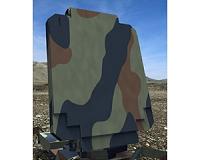 |
Berlin, Germany (SPX) Oct 21, 2010 This is the moment we have been anticipating for a long time; TerraSAR-X and TanDEM-X finally have 'eye contact'. The final manoeuvre to adjust the close formation was performed on 13 October. Now, the two satellites are orbiting at a distance of less than 400 metres from one another. Over the last three months, the space operations centre has successfully demonstrated safe and precise formation flying of TerraSAR-X and TanDEM X with a distance of 20 kilometres between them. Now, we have approval for close formation flight and, for the first time, simultaneous radar observations are possible - without which the joint mission objective, a 3D elevation model of Earth's land surface, cannot be achieved. The change in the formation change, which was implemented within a period of three days, is shown in the diagram above: both satellites are flying away from the observer - into the image plane - and Earth's surface is 514 kilometres below them. Once per orbit around Earth, which takes about 95 minutes, TanDEM-X (TDX) moves in a counter-clockwise elliptical path relative to TerraSAR-X (TSX). The green ellipse shows the initial formation, which was used during the period of 22 July to 10 October. The third dimension - the separation of the satellites in the direction of flight - is not shown; this was 20 kilometres. As a result of the orbital manoeuvres performed by TanDEM X, the relative path changed first to the red ellipse, then to the black, the to the magenta, and finally to the blue curve. The horizontal separation was gradually reduced from 1305 to 362 metres and the vertical separation increased from 300 to 400 metres. During the first manoeuvre (green-red transition), the orbit altitude was changed so that the orbital period of TanDEM-X was shortened by 87 milliseconds. TanDEM-X was therefore moving slightly faster than TerraSAR-X and eliminated the 20-kilometre lead held by TerraSAR-X within two days. The approach was made at a 'snail's pace', with a relative speed of about 0.4 kilometres per hour; by comparison, a pedestrian moves at about five kilometres per hour. The path show by the blue ellipse will now be maintained for the duration of the bistatic instrument calibration phase. Special attention was paid during the approach to the Inter-Satellite Link (ISL), a data transfer connection between TerraSAR-X and TanDEM-X. At the beginning of the approach phase, the ISL was activated in order to experimentally determine at what distance the first data could be transmitted - an interesting task for the team in the control room. On 13 October at 03:00 hrs, the first connection was achieved; while TanDEM-X was in contact with the DLR ground station at Inuvik, data sent from TSX to TDX could be viewed for the first time. At that time, the satellites were five kilometres were apart. With decreasing distance, the data transmission has become more stable and the link's full functionality was demonstrated. This laid the foundation for a further innovation - the TanDEM X Autonomous Formation Flying (TAFF) system could finally be activated. The TAFF flight software, which was developed at DLR / German Space Operations Center, continuously obtains orbit information from TerraSAR-X over ISLs, which it filters, together with orbital parameters from TanDEM-X and thus determines the relative orbital position - in the simplest case, a distance measurement. Deviations from the target formation are determined and communicated via telemetry to the operations team. In a long test phase, TAFF must now be proven. If it functions reliably and accurately, in future TAFF will carry out the daily manoeuvres that are performed using the cold gas thrusters for precise alignment of the satellite formation.
Share This Article With Planet Earth
Related Links DLR Space Technology News - Applications and Research
 Preliminary Design for New Long-Range Surveillance Radar Completed
Preliminary Design for New Long-Range Surveillance Radar CompletedSyracuse NY (SPX) Oct 21, 2010 The U.S. Air Force has approved Lockheed Martin's preliminary design for its next-generation mobile, long-range surveillance and ballistic missile defense radar. The Three-Dimensional Expeditionary Long-Range Radar (3DELRR) will serve as the principal ground-based sensor for long-range detection, identification, tracking, and reporting of aircraft and missiles for both the Air Force and th ... read more |
|
| The content herein, unless otherwise known to be public domain, are Copyright 1995-2010 - SpaceDaily. AFP and UPI Wire Stories are copyright Agence France-Presse and United Press International. ESA Portal Reports are copyright European Space Agency. All NASA sourced material is public domain. Additional copyrights may apply in whole or part to other bona fide parties. Advertising does not imply endorsement,agreement or approval of any opinions, statements or information provided by SpaceDaily on any Web page published or hosted by SpaceDaily. Privacy Statement |